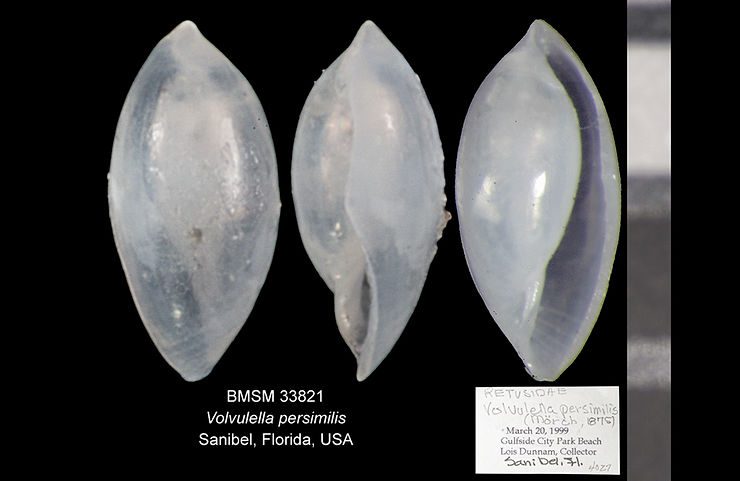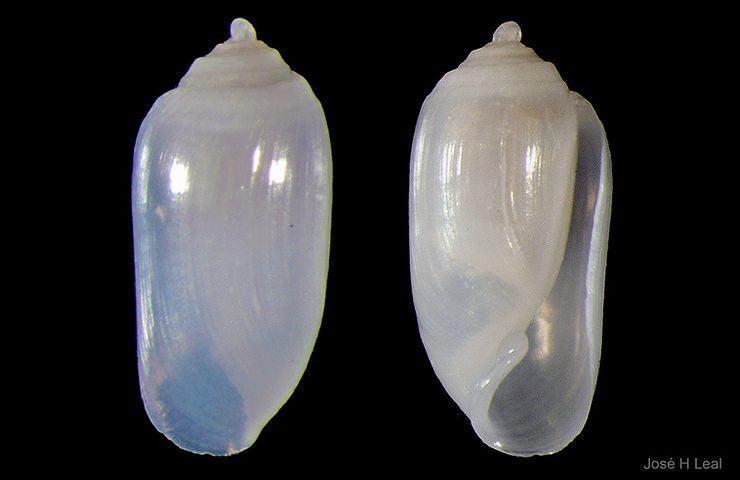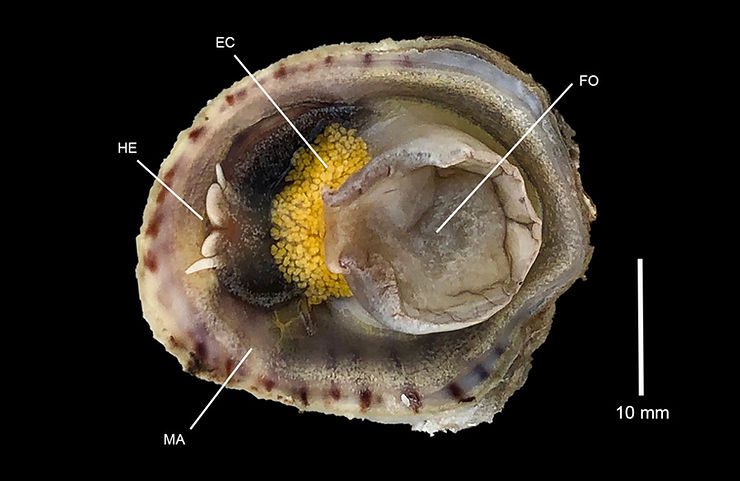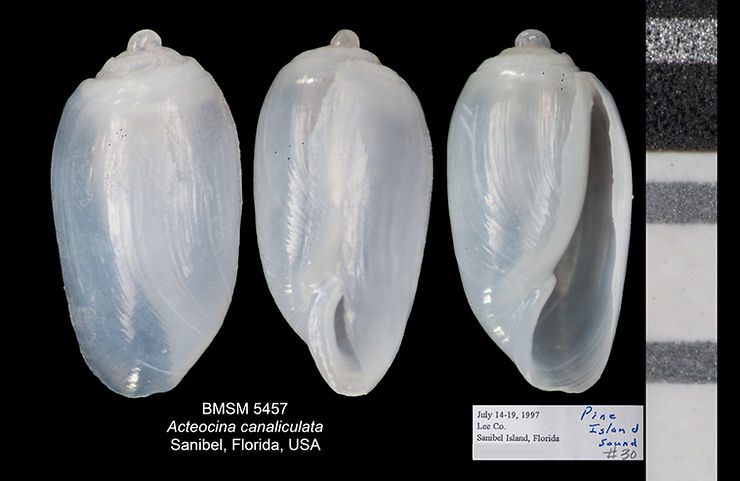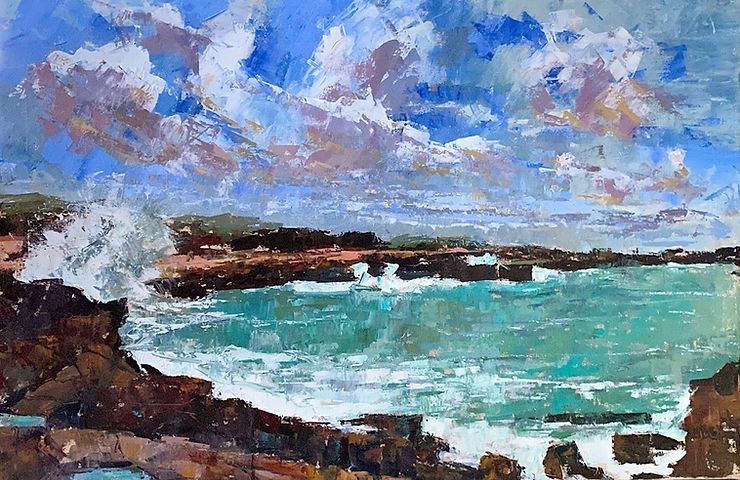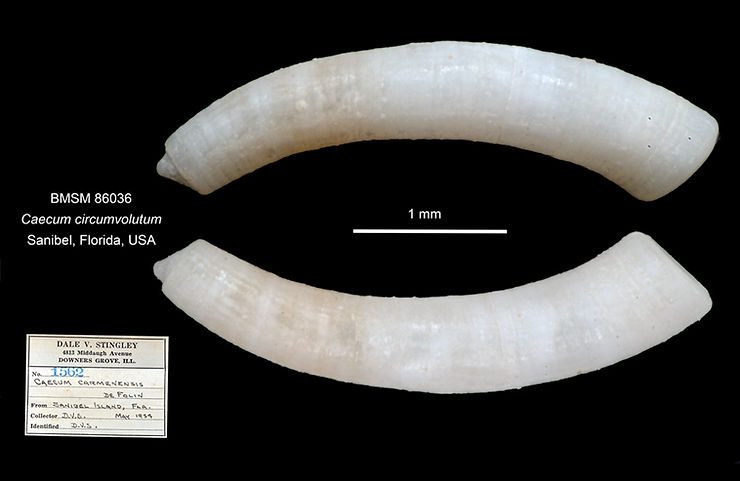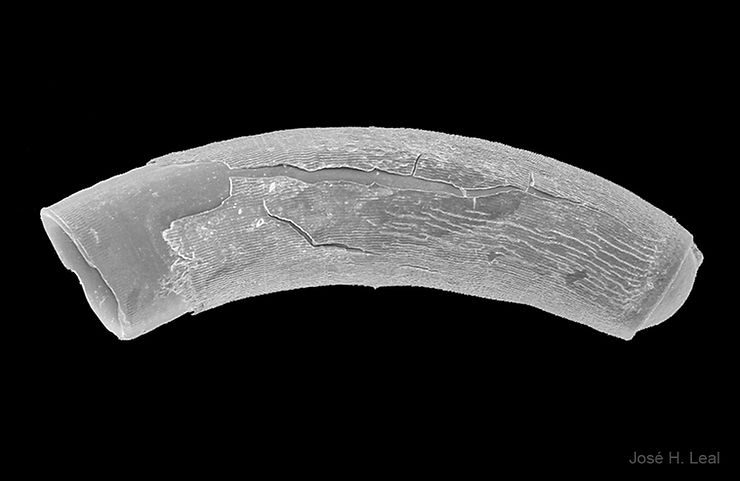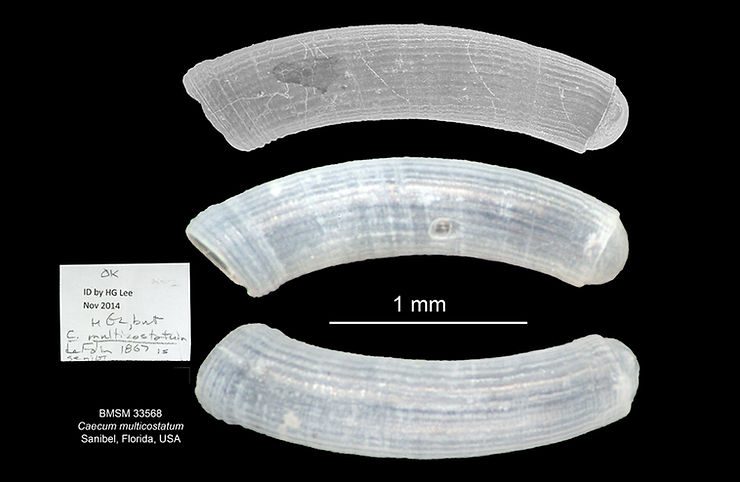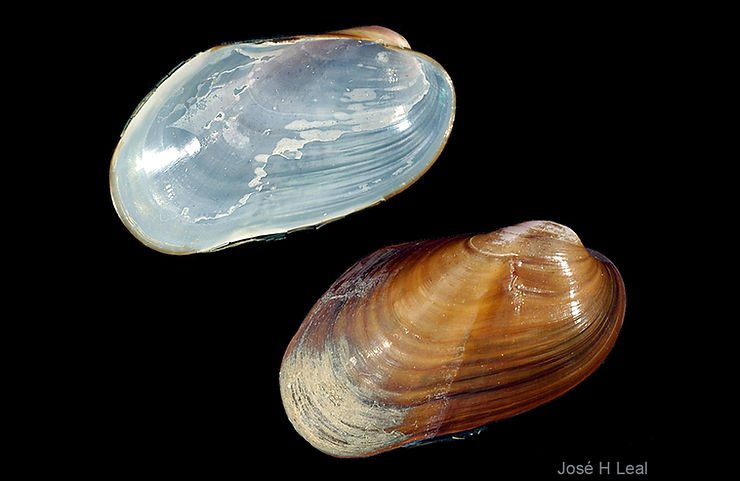
Shell of the Week: The Chestnut Mussel
Mussels are not only good seafood, but they also come in a large number of different species. The Chestnut Mussel, Lioberus castanea (Say, 1822) is a relatively small species that rarely reaches beyond 25 mm (one inch). Its shell is elongate, inflated, with the brown outer layer, the periostracum, that is so characteristic of the mussel family Mytilidae. There is a distinct, sharp line separating the posterior end (lighter color) from the anterior end (darker color). The inner surface of the she
